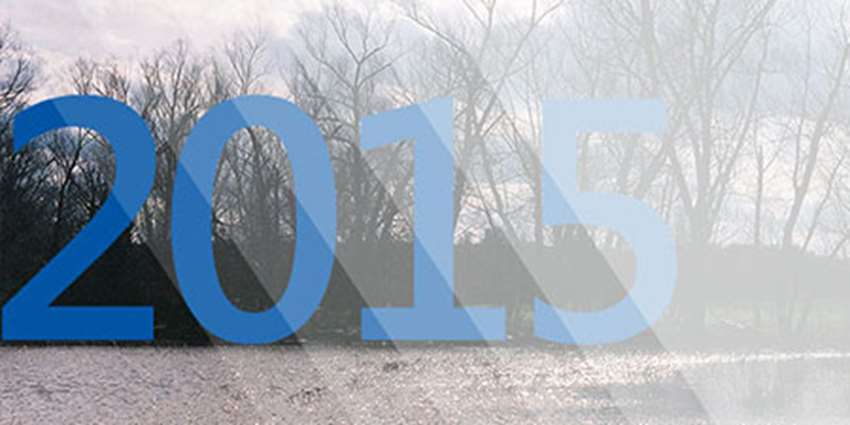For the Texas A&M Institute of Renewable Natural Resources (IRNR) and the Texas Water Resources Institute (TWRI), 2015 marked another successful year as they partnered in water and natural resource research and education. The institutes are anticipating the important work ahead in 2016 and reflecting on a productive 2015, said Dr. Roel Lopez, IRNR director and former TWRI director.
IRNR received $4.98 million in grant funds in 2015, and TWRI received $3.41 million. More than 60 full-time staff members contributed to the institutes in 2015.
TWRI took a major step forward in 2015. Following a nationwide search, Dr. John Tracy, former director of the Idaho Water Resources Research Institute at the University of Idaho, was named TWRI director in December.
“This year we will enhance TWRI’s current role in addressing Texas water resource challenges by continuing to build strong collaborative relationships with the professional water resource community across Texas and focus on building interdisciplinary project teams to address water resource issues in a comprehensive manner,” Tracy said.
In 2015 TWRI worked with scientists and local stakeholders to improve water quality in watersheds all across the state.
“We continued to provide statewide leadership for watershed efforts, and we’ll work to expand our efforts in 2016,” said TWRI Associate Director Dr. Kevin Wagner. “From our efforts to assist communities around the state in improving water quality and local watersheds, such as the Navasota River Water Quality Improvement project, to our statewide landowner Riparian and Stream Ecosystem Education Program, TWRI has sought to protect and restore our precious water supplies throughout Texas.”
IRNR researchers and analysts made numerous strides in 2015, including the release of a new Texas Land Trends data tool. The tool is the only one of its kind for Texas and gives users interactive access to information on changes in land use, ownership size and property values of rural working lands, alongside population changes from 1997 to 2012.
“The data and analysis produced by Texas Land Trends is invaluable to and used by many different groups within Texas,” Lopez said. “We plan to incorporate this tool into other TWRI and IRNR research projects in 2016.”
IRNR also established a presence at the Dallas Texas A&M AgriLife Research and Extension Center, focused on research laboratory work for freshwater mussels, Lopez said.
“Freshwater mussels are one of the most imperiled wildlife taxa in the world and play important ecological roles in freshwater ecosystems,” he said. “The possible listing of mussels, particularly in central Texas, has the potential to cause significant economic impacts, through reductions or reallocations of water. This research group will serve to address questions critical to the recovery and management of these species.”
In 2015 the institutes collaborated with a wide variety of partners, including Texas A&M University System entities, private foundations and organizations, other universities and various local, state and federal agencies.
For more on the institutes’ recent work, read some of the institutes’ top Conservation Matters stories from 2015:
- TWRI Mills Scholar finds high flow events critical for lower Brazos fish
- New director appointed for the Texas Water Resources Institute
- txH2O magazine celebrates 10 years and brand new issue
- Texas Well Owner Network publication wins educational materials award



